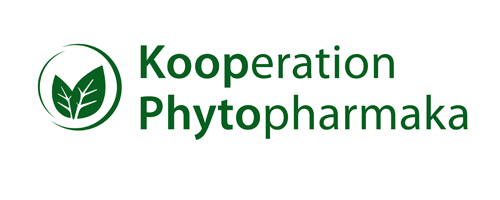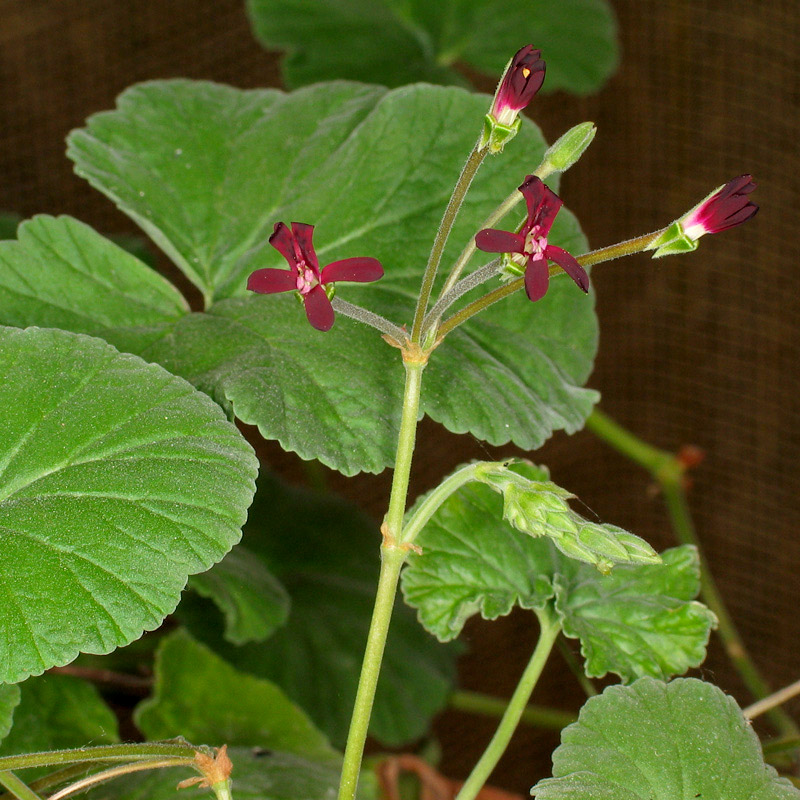Botanical name
Cape Pelargonium - Pelargonium sidoides DC.
Family
Geranium family (Geraniaceae)
Useful information about the plant
Pelargoniums are native to South Africa and to us they are only falsely known as ornamental by the name of "geranium." They are in fact very similar to the species of the genus Geranium, but the flowers are slightly monosymmetric versus the radial symmetry of Geranium species. As with the grasslands storksbill (Geranium pratense) native here, the fruits of Pelargonium species also have a long beak. The seeds are catapulted out of it and thus fall far from the mother plant onto the ground, a very special mechanism of seed dispersal. The fruit on the beak also refers to the genus name Pelargonium, which is derived from Greek "Pelargos" (= stork), in the translation, we are dealing therefore with a "storksbill" plant (wild geranium).
The Cape Pelargonium is a small shrub, 20 to 80 inches high and grows at altitudes of up to 200m from Lesotho over parts of the Transvaal and the Orange Free State to north-east of the Cape. Its heart-shaped leaves are densely covered with glandular hairs, which give them a shiny silver appearance. The flowers are dark red to black. With a strong root system the plant can survive drought and fires. The individual roots are 1 to 3.5cm thick and divided into short, long and bulbous, unthickened sections. It is also called "African Umckaloabo root".
"Umckaloabo" is composed of two terms from the Zulu language, 'umKhulkane' means something like "symptoms/disease of the lungs", "uUhlabo" means "chest pain". Thus, the traditional use of the root is documented.
In 1897, the consumptive Englishman Charles Henry Stevens went on his doctor's advice to the favourable climate of South Africa. There a Zulu knowledgeable about plants drew his attention to the Cape Pelargonium and he was successfully treated and cured with a decoction of the root. He brought this secret medicine to England. The former medical missionary Dr. Adrien Sechehaye learned of this remedy in 1920, and thus treated 800 patients in the following years. In 1930 he published his findings, after which the Umckaloabo root was introduced in Europe for the treatment of tuberculosis. Nowadays, however, tuberculosis can be treated effectively with antibiotics, so the Umckaloabo root is not used anymore. But it is still important today in herbal medicine for respiratory problems.
A second South African Pelargonium species is also used medically, the P. reniforme Curt.,. which is very similar to the Cape Pelargonium in its habit, with magenta flowers and a black marking on the petals.
Medicinally used parts of plants (herbal drug)
The dried root is used. For reasons of species protection, the drug comes largely from cultures in South Africa.
Constituents of the herbal drug
Pelargonium root contains coumarins, tannins and simple phenolic compounds (e.g. gallic acid).
Quality of the drug
The quality of Pelargonium root (pelargonii radix) is specified in the European Pharmacopoeia (Ph. Eur).
Medical applications
Recognised medical use
The Commission E has not processed Pelargonium root.
Clinical studies have shown efficacy in the treatment of acute bronchitis (approval). The use of Pelargonium root with sinus infections is still under discussion.
Traditional use
Pelargonium root has no listing as a traditional medicine (traditional application acc. to § 109a).
Herbal drug preparations in finished dosage forms
- alcoholic extracts in drops
- dried extract in tablets
Dosage
Prepared drugs: see package insert;
Tea infusion: Pelargonium root is only worth using in the form of extracts as a finished drug.
Preparation of a tea
N/A
Notes
There are no studies on the safety of using Pelargonium root during pregnancy and whilst breast-feeding. Pelargonium root must not be applied to infants under 1 year old.
Side effects
Rarely, gastrointestinal discomfort and rarely softgums or nose bleeds. Very rare severe hypersensitive reactions with facial swelling, dyspnea, and hypotension.
Interactions
A stronger effect of anticoagulant medicines such as Phenprocoumon (Marcurmar) and Warfarin cannot be excluded.
References
Herbal drug monographs
None
Further literature
Wichtl: Teedrogen und Phytopharmaka, pg. 497
Schilcher: Leitfaden Phytotherapie, pg. 272
Van Wyk: Handbuch der Arzneipflanzen, pg. 231
Kommentar zum Europäischen Arzneibuch (Pelargonium root, no. 2264)


